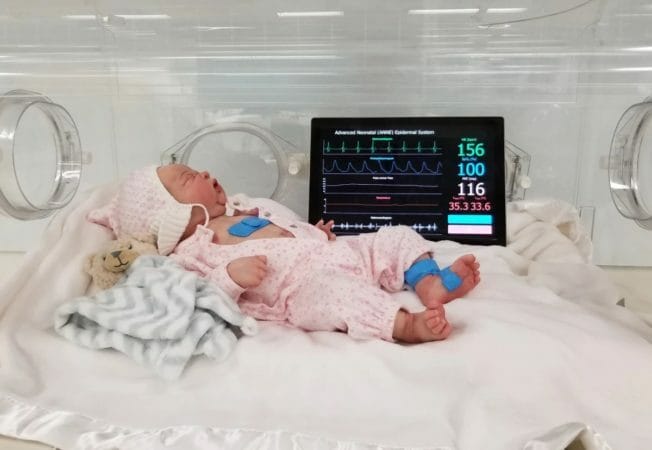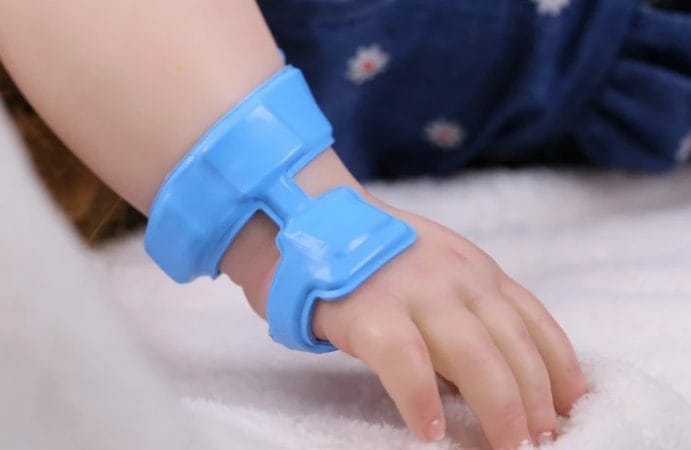- Health Is Wealth
- Posts
- Wireless sensors to track the health of premature babies
Wireless sensors to track the health of premature babies
What if wireless sensors can better track the health of premature babies? There is a great disparity between the survival rates of babies born prematurely in the developing world and those in the developed world. This is why scientists at Northwestern University are working on ways to bridge this gap.
This has led to the development of a new type of wireless sensor that can be worn. The goal: to monitoring the vital signs of babies and pregnant women. The technology to be tested on thousands of subjects over the next two years.

These wireless sensors are a bit of a V2
The research builds on previous work by the same scientists who demonstrated last year a new type of soft, flexible sensor designed to replace the wired systems that monitoring babies in intensive care.
In general, these are electrodes placed on the baby's skin to monitoring his blood pressure. But also his oxygen level, his heart rate and other vital signs. But the team discovered that they could get data with the same accuracy by using wireless versions instead.
These sensors work in pairs. One being placed on the foot and the other on the chest. They have now been improved to the point of exceeding the performance of existing cable solutions. They have the ability to monitoring crying, movement, body orientation and heart sounds.
These sensors are also much softer on sensitive baby skin than wired versions. The team added thin batteries as an energy source. Then the data is transmitted by radio waves to a telephone, tablet or nursing station screen.

Easy to use, useful and practical technology
"We could not just introduce our existing technology to other countries and other environments without taking into account their specific needs. Says John A. Rogers.
“We wanted to understand the larger landscape and develop technology that was easy to use; but also useful and practical. We knew we had to lay the groundwork for very robust reusable devices. But also usable in regions where facilities and resources are limited ”.
This technology can also be used to closely monitoring the vital signs of pregnant women during childbirth. The goal is to ensure safe delivery and reduce the risk of maternal mortality.
The team has already tested the sensors on 42 babies in Kenya. Its performance has been validated by benchmark monitoring systems. Researchers are now preparing for large-scale trials. They want to Review 15,000 pregnant women and 500 newborns by mid-2021.
These wireless sensors are a monumental advance
“This new technology represents a monumental advance in neonatal and pediatric care. "Says Dr. Debra Weese-Mayer, who co-edited the study. It’s not just about making critical care systems “wireless”, but thinking deeply about the non-traditional variables that we need to integrate to study health and stability in more detail. ”
Researchers are working to obtain FDA approval for this technology later this year. They hope to deploy the sensors to American hospitals within 12 months. They are also working on integrating artificial intelligence into the system to make data processing more efficient.
The research was published in the journal Nature Medicine.
AB SMART HEALTH REVIEW